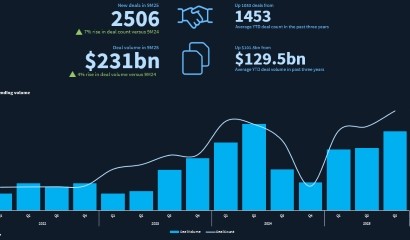Australia traps its first phoenix – and there could be more to come
It’s official – phoenix companies can no longer rise from the ashes in Australia, born anew with their business intact and free of their previous liabilities.
In mid-May, digital translation business Intellicomms Pty Ltd’s attempt to defeat its creditors and resurrect itself as Tecnologie Fluenti Pty Ltd (TF) received the dubious honour of being set aside as Australia’s first creditor-defeating disposition (or phoenix transaction).
Associate Justice Gardiner of the Victorian Supreme Court labelled Intellicomms’ attempt to transfer its business at a price well below market value to newly-incorporated TF – an entity controlled by Intellicomms’ sole director’s sister – moments before voluntarily entering liquidation as a blatant and audacious example of phoenixing. The judge swiftly rejected TF’s attempts to justify the sale on the back of questionable valuations, as well as its efforts to cast aspersions on the motives of the creditor which funded the liquidators’ application to set the sale aside.
But perhaps most importantly, the judge adopted a practical and commercial approach to determining whether Intellicomms’ business was sold at below market value and below the best price reasonably obtainable at the time, rather than requiring the liquidators to strictly prove each of those values. That could entice liquidators to pursue more cases in future – even where they aren’t quite as blatant.
A minutes-to-midnight sale
Intellicomms operated a digital translation business under the trading name “ezispeak” for customers including Bupa, Origin Energy, Telstra and the Government of New Zealand. The software utilized by Intellicomms to provide those services was developed by Callscan Australia Pty Ltd (trading as QPC), a subsidiary of UK-based QPC Holdings Limited, which supplied software, hardware and telephone platform services within the call centre industry. QPC was also a minority shareholder in Intellicomms, holding approx. 28.16% of its issued share capital.
By 2021, Intellicomms had fallen behind in payments due to QPC and the parties briefly discussed a debt rescheduling as well as a debt-to-equity conversion. In August, however, the discussions broke down and QPC suspended Intellicomms’ access to its software platform, before then serving a statutory demand for the payment of approx. AUD 923,000.
On 6 September 2021, shortly before QPC’s statutory demand was set to expire (which would have deemed QPC insolvent), Intellicomms called a short-notice shareholder meeting for the purposes of placing Intellicomms into voluntary liquidation. The meeting took place on 8 September, one day before QPC’s statutory demand was due to expire. At the meeting, Intellicomms sole director – Rebecca Haynes – advised that no assets had been sold (other than office equipment). QPC then voted in favour of the resolution and Intellicomms was placed into creditors’ voluntary liquidation, with Glenn Jeffrey Franklin and Petr Vrsecky of PKF being appointed liquidators.
Shortly after their appointment, the liquidators discovered that Intellicomms had already entered into an agreement to sell its business. Moments before entering voluntary liquidation (and without informing QPC), Intellicomms had entered into a sale agreement with TF – a newly incorporated entity controlled by Michelle Gigliotti, who is the sister of Intellicomms’ then-sole director and was the former financial and payroll administrator of Intellicomms. The sale agreement provided for the sale of Intellicomms’ business (including its goodwill, intellectual property, shares held in subsidiaries including its New Zealand business and contracts with key customers and sub-contractors) for a net purchase price of only AUD 20,000. Aside from certain specified entitlements owed to employees being transferred to TF, TF did not assume any of Intellicomms’ outstanding AUD 3.2m of liabilities.
In mid-September, the liquidators advised Intellicomms’ former business consultant, de Jonge Reed – which was engaged to provide pre‑insolvency advice – that they would not be proceeding with the sale (which remained conditional on certain matters being completed) due to concerns that the sale agreement had not been executed at arm’s‑length and was likely to be an uncommercial and insolvent transaction.
At around the same time, the liquidators were approached by QPC, which advised that if the sale contract was set aside, QPC would be interested in acquiring the assets at a price of between AUD 500,000 and AUD 1m through any sale process run by the liquidators. QPC also agreed to fund efforts by the liquidators to have the sale set aside as a creditor defeating disposition.
The liquidators did exactly that in early October, seeking orders that the sale be set aside and that: (i) TF deliver up all of Intellicomms’ property; (ii) TF account for any benefits derived from use of Intellicomms business; (iii) any contracts between TF and former Intellicomms customers be varied (with the consent of the customers) so that TF is replaced by Intellicomms as a party to the agreement; and (iv) if any former customers refuse to such a variation, that their contracts with TF be voided.
Proving a creditor-defeating disposition
To have the sale set aside as a creditor-defeating disposition, the liquidators needed to demonstrate (inter alia) that:
- the consideration payable by TF in connection with the sale was below the lesser of: (i) the market value of Intellicomms’ business; and (ii) the best price that was reasonably obtainable for the business having regard to the circumstances existing at that time; and
- the sale had the effect of either: (i) preventing property from becoming available for the benefit of Intellicomms’ creditors in liquidation; or (ii) hindering, or significantly delaying, the process of making the property available for the benefit of Intellicomms’ creditors in liquidation.
The liquidators also needed to demonstrate that the sale was entered into within the statutorily-required time period, but that wasn’t challenged given that the sale agreement was executed only hours before the winding-up petition was presented.
A commercial approach to validation
TF was forced to admit that the sale prevented property from becoming available for the benefit of Intellicom’s creditors. The key issue was therefore whether the business was sold for less than market value or the best price reasonably obtainable.
Neither of those concepts are defined under the anti-phoenixing legislation, but the explanatory memorandum published with the draft legislation described market value as the price that would be paid in a hypothetical transaction between a knowledgeable and willing, but not anxious seller, and a knowledgeable and willing, but not anxious buyer who transact at arm’s length. It also noted that the best price, reasonably-obtainable test recognised that there will be legitimate situations where a company may need to realise assets at less than market value, such as where they have urgent cash flow needs. In such cases, the circumstances of the disposition – including the company’s financial position and the reasonableness of the steps it took to realise the value of the asset (such a, for instance, testing the market by undertaking a public auction) will be relevant.
The liquidators had three main arguments.
First, they pointed to QPC’s interest in acquiring the business as evidence that the sale must have been implemented at a price significantly below market value and the best price reasonably obtainable. As the liquidators noted, QPC was not a stranger to Intellicomms’ business. QPC was a shareholder, a major supplier of services to Intellicomms and a market participant. Though it had been prevented from making a formal offer for the business (because the business had already, secretly been sold), it had nevertheless indicated it would be willing to bid an amount significantly higher than the sale price for the business if it was to be sold by public auction, suggesting the business was more valuable than indicated. Interest received by the liquidators from other market participants (after news broke that the sale would be challenged) suggested likewise.
Next, the liquidators pointed to the circumstances surrounding the sale as evidence it must have been concluded at a discount, namely that: (i) Intellicomms took no steps to ascertain whether the business could be sold to anyone other than TF; (ii) the primary intention of the sale was to ensure the business was not purchased by QPC; (iii) TF is owned by a relative and was incorporated only weeks prior to the sale; (iv) there was only a short period of time between when the sale was entered into and shareholders resolved to place Intellicomms into liquidation; (v)there was no legitimate urgency to sell the assets without testing the market; and (vi) there was no suggestion that Intellicomms considered voluntary administration in lieu of being placed into liquidation.
Finally, the liquidators took issue with the various valuations Intellicomms and TF had procured in an attempt to justify the sale price, each of which had presented a bleaker picture of the company’s financial position than the previous version, based on increasingly pessimistic forecasted and projected cash flows provided by Intellicomms:
- in February 2021, Intellicomms obtained a valuation from the Rushmore Group (in connection with the potential conversion of QPC’s debt into equity) which concluded that Intellicomms’ fair market value, on a discounted cash flow basis, was approx. AUD 11.2m as at June 2020;
- in July 2021, Intellicomms obtained a valuation from FTI Consulting (again in connection with the potential conversion of QPC’s debt into equity) which concluded that Intellicomms’ fair market value was much lower – between AUD 117,000 and AUD 683,000 as at 30 June 2021;
- in August 2021, Intellicomms obtained a valuation from Nexus Business Consultants (to ascertain the market value of assets to be acquired by TF) which valued Intellicomms goodwill at AUD 101,000 (excluding all New-Zealand derived revenue and the value of Intellicomms’ New Zealand subsidiary); and
- in September 2021, Intellicomms obtained a revised valuation from Nexus which valued Intellicomms’ goodwill at AUD 57,000 because of the potential loss of significant contracts as a result of QPC’s termination of Intellicomms’ licence to use its platform.
The liquidators argued that Intellicomms had deliberately depressed the value of its business and that little weight should be placed on the latter valuations (or the expert valuation TF had arranged from Grant Thornton to support its position at trial) for a number of reasons, including that: (i) the valuations were based upon worst-case forecasts; and (ii) valuations obtained to justify a sale to a new related company prior to placing a company into liquidation were highly vulnerable to corruption. The liquidators also presented an expert report prepared by William Buck, highlighting the inadequacies of the Nexus and Grant Thornton valuations (including, for instance, that they appeared to exclude all subsidiary revenue in New Zealand).
In response, TF argued that the liquidators couldn’t just cast aspersions, they needed to actually prove what the market value and best price reasonably obtainable were in September 2021.
But the court disagreed.
In Associate Justice Gardiner’s view, the liquidators only needed to establish on the balance of probabilities that the consideration payable under the sale agreement was less than both market value and the best price reasonably obtainable. The judge accepted that the liquidators had done so in this case, expressly noting the lack of any explanation for the urgent sale of the business and the failure to test the market. The judge also noted that the fact that QPC was willing to fund the litigation – and that TF was willing to defend its rights – suggested that the assets must be worth significantly more than AUD 20,000.
No evidence of mala fides on QPC’s part
Bizarrely, TF also argued that QPC’s motivations were improper (presumably meaning that little weight should be attached to its offer to pay a significant sum for the business). According to TF, QPC was attempting to execute a hostile takeover of Intellicomms to maximise its financial return and obtain confidential information which would assist one of its subsidiaries which was in competition with Intellicomms. Haynes had apparently advised minority shareholders (other than QPC) that QPC had accrued a significant debt under false pretences, putting it in a strong commercial position to acquire Intellicomms.
But by the time the case came to trial, TF chose not to argue that the debt had been accrued under false pretences and the court accepted that QPC, as a creditor, was entitled to seek to recover its losses by whatever means legally available, including by seeking to purchase Intellicomms’ business through a legitimate sale process run by the liquidators.
There’s no going back
TF’s final argument was that there was no point voiding the sale because the business could not be transferred back to the liquidators. That was because: (i) the character of the business had changed – there were new customers, new service providers and new technology systems in place; (ii) the complete restoration of the business was not possible because relationships with customers, service providers, and employees might not be maintainable – Haynes, for instance, had indicated she would not work for the company; (iii) certain contracts may not be able to be re-assigned to the liquidators; and (iv) there was no guarantee that creditors would benefit from a new liquidator-led sale process given the costs that would involve. But not surprisingly, the court wasn’t impressed by the argument.
A blatant example – now the advisers might face scrutiny
Ultimately the case was a straightforward one and the sale was declared void. As Associate Justice Gardiner noted, it was a brazen and audacious example of a creditor-defeating disposition.
Interestingly though, Intellicomms’ advisers largely escaped scrutiny.
In his judgment, Associate Justice Gardiner made multiple references to the fact that Intellicomms’ plan to place its assets beyond the reach of its creditors had been devised with the assistance of its pre-insolvency advisers, de Jonge Read. Under Australia’s anti-phoenixing legislation, any person (including advisers) who engages in any conduct of procuring, inciting, inducing or encouraging the making of a creditor-defeating disposition can also face sanction. But Associate Justice Gardiner stopped short of openly criticizing the advice provided to Intellicomms, even though it would seem (from the legislation’s explanatory memorandum) that the legislature was acutely aware that phoenix transactions are sometimes facilitated by “unscrupulous pre-insolvency advisers, accountants, lawyers or other business advisers”. Whether the Australian Securities and Investment Commission (ASIC) now decides to take action against Intellicomms’ advisers remains to be seen.
Looking forward
Finally, a parting thought on two tangential issues which could be more important in future cases.
First, it is noteworthy that the liquidators chose to bypass the ASIC (which could have set aside the sale as a creditor defeating disposition without involving the court) and instead head straight to court. Given how blatant Intellicomms’ conduct was, that was somewhat surprising. But quite possibly, the liquidators could have simply formed the view that: (i) approaching the ASIC would simply waste time because TF would most likely seek to set aside any ASIC order obtained anyway (particularly given that this is the first phoenixing case brought under the new legislation); and (ii) approaching the court directly would enable the liquidators to pursue alternative claims at the same time (more on that below). But if that was indeed the case, the question becomes whether liquidators will ever approach the ASIC as a first step.
Second, it is interesting that while the liquidators initially made alternative claims that the sale to TF was: (i) an uncommercial transaction (an agreement which, having regard to the benefits and detriments of the transaction to a company and other parties, was not a transaction that a reasonable person would have entered into); and/or (ii) an unreasonable director-related transaction (a payment, conveyance, transfer, disposition, issuance of securities or incurring of an obligation with a director or close associate of a director that a reasonable person in the company’s circumstances would not have entered into), by the time the case went to trial, the alternative claims weren’t pressed.
Most likely, that was because the liquidators (and their counsel) were satisfied that the creditor defeating disposition claim was straightforward and simpler to prove. The judge’s commercial approach to valuing the business (and the result) would seem to vindicate that approach. But in future cases, things might not be so obvious. We will have to wait until then to see whether it is indeed simpler to invalidate phoenix sales than other transactions.










